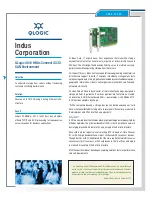
S e n d d o c u m e n t a t i o n c o m m e n t s t o m d s f e e d b a c k - d o c @ c i s c o . c o m
22-19
Cisco MDS 9000 Family CLI Configuration Guide
OL-16184-01, Cisco MDS SAN-OS Release 3.x
Chapter 22 Configuring Inter-VSAN Routing
Configuring IVR
•
The VSAN topology configuration must be updated before a border switch is added or removed.
Configuring IVR Without NAT
You must create the IVR topology in every IVR-enabled switch in the fabric if you have not configured
IVR topology in auto mode. You can have up to 128 VSANs in an IVR topology. Specify the IVR
topology using the following information:
•
The switch WWNs of the IVR-enabled switches.
•
A minimum of two VSANs to which the IVR-enabled switch belongs.
•
The AFID, which distinguishes two VSANs that are logically and physically separate, but have the
same VSAN number. You can specify up to 64 AFIDs. See
Figure 22-2
.
Figure 22-2
Example IVR Topology with Non-Unique VSAN IDs Using AFIDs
Note
If two VSANs in an IVR topology have the same VSAN ID and different AFIDs, they count as two
VSANs for the 128-VSAN limit for IVR.
Note
The use of a single AFID does not allow for segmented VSANs in an inter-VSAN routing topology.
Caution
You can only configure a maximum of 128 IVR-enabled switches and 128 distinct VSANs in an IVR
topology (see the
“Database Merge Guidelines” section on page 22-36
).
Manually Configuring the IVR Topology
Use the sh
ow wwn switch
command to obtain the switch WWNs of the IVR-enabled switches.
VSAN 5
Transit VSAN
IVR-Enabled
MDS switch
IVR-Enabled
MDS switch
VSAN 10
AF ID 2
VSAN 10
AF ID 5
130184
















































